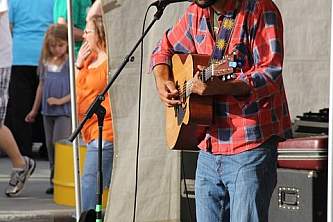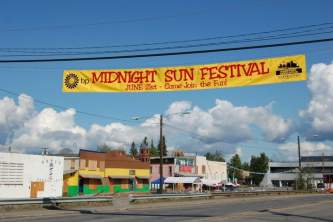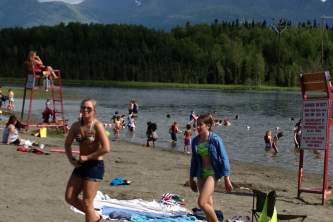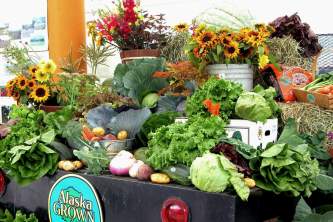Alaska Natural Phenomena
Alaska features a number of unique sights and amazing natural events that visitors can experience with a little advance planning. Spread out through different seasons and in different locales, these phenomena range from atmospheric illusions to wintery miracles to startling concentrations of wild animals. Several occur outside of the popular May-August period and could enliven a snow or shoulder season visit!
Here’s what to look for and how to find it:
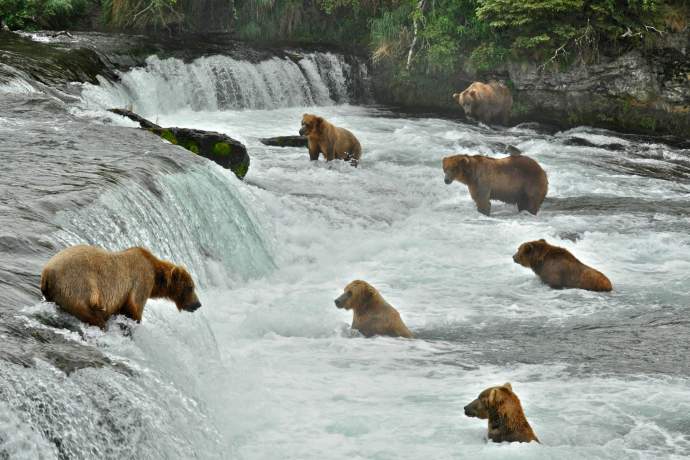
Brooks Falls and other bear congregations
When the salmon begin running—especially sockeye salmon that converge in dense schools on rivers—brown bears will congregate in large numbers to feast where waterfalls or rapids stack up the fish. Brooks Falls on the Brooks River in Katmai National Park regularly concentrates dozens of bears that feast on fish during July and August and into the fall. (Check out the webcam!) In the presence of such a rich source of protein and fat, the normally solitary bears tolerate each other at close proximity (more or less.) Humans can take advantage of that adaptation and observe the spectacle from viewing sites that give the bears plenty of room. Because people follow strict viewing guidelines, the bears largely ignore their human admirers.
Where?
The sweet spot for viewing these remarkably dense concentrations may be the main Brooks Falls, but bears work the salmon up and down a mile stretch of the Brooks River. Other world-class bear congregations with viewing traditions can be found at the McNeil River State Game Sanctuary on the west side of Cook Inlet in Kamishak Bay across from Homer and at Pack Creek Bear Viewing Area on Admiralty Island in the Tongass National Forest. Many professional guides in Homer and Anchorage offer tours to other bear-and-salmon congregations on the Alaska Peninsula, often fly-in adventures with few other visitors. Of course, there are lots of places in Alaska to see bears in the wild in smaller concentrations.
When?
In general, bears are present at most sites from June through September, with each location experiencing peaks during slightly different weeks, most often in July and August. Check out this Katmai bear viewing FAQ for more detail about the great moments at Brooks Falls and other sites in the park. McNeil River falls sees the highest concentrations between mid July and early August.
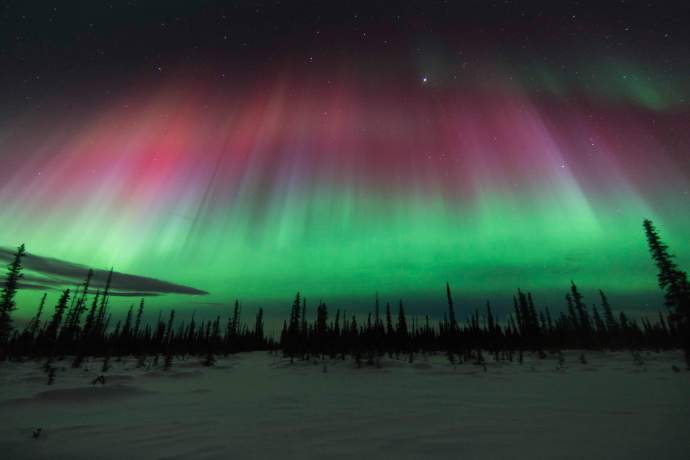
Northern Lights (Aurora Borealis)
What is it?
The celestial curtains that bathe Alaska’s winter sky range from subtle green shimmers that will strike you as pretty to dramatic purple-red displays that might make the hair stand up on your head. Generated when the charged solar wind slams into the earth’s magnetic field, the aurora forms a sort of planetary halo surrounding the magnetic poles. The physics of it is similar to what produces the glow inside an old-fashioned tube television. But the experience will stir your soul.
Where?
While the aurora can be seen in the northern sky throughout Alaska, the Fairbanks area and north into the Yukon River Valley may be the state’s sweet spot for viewing. The aurora can literally be overhead. It helps to get away from city lights (especially if you’re in Anchorage) and monitor the Aurora Forecast for the up-to-date predictions. Here are our recommend tours and experiences.
When?
The aurora usually peaks over Alaska very earlier in the morning, often between 2 am and 4 am. Most reliable viewing will be found during the dark season between Fall and Spring equinoxes. It’s not visible at all from May through July due our extended daylight.
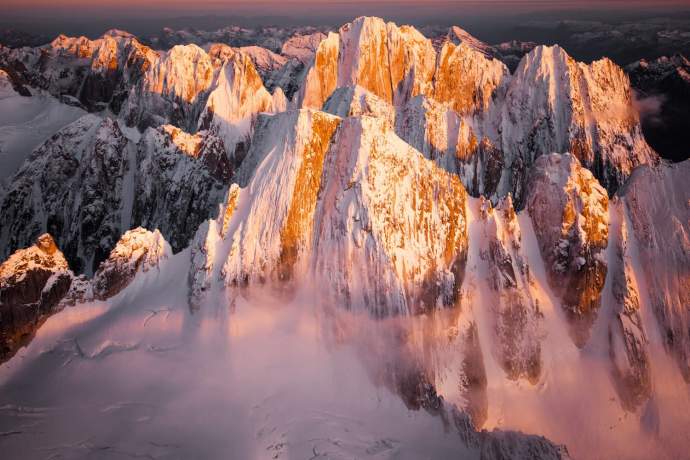
Alpenglow
Mountain summits will often glow with a magical orange-red light in the period just before sunrise and just after sunset. This subtle, otherworldly illumination appears opposite from the sun when the solar disc is actually just beneath the horizon. (True alpenglow is not caused by direct sunrise or sunset light.) The light gets refracted from below the horizon and scattered through the atmosphere by ice crystals. The phenomenon can also be seen in cloudbanks or across sky itself when no mountains are in view.
Of course, mountain peaks will also reflect sunrise or sunset in the moments before you experience direct sunlight or after it’s gone, especially if you are in a valley. And this glow can be just as beautiful (and reddish) as true alpenglow. It’s fun to watch the sun line descend the slope toward you, or climb to the summit and fade away.
Where?
Watch for alpenglow anywhere the mountains face a long fetch toward the rising or setting sun. The west-facing front of the Chugach Mountains—Anchorage’s stunning backdrop—often glows red during late winter afternoons after the sun has set beyond Cook Inlet. Denali in the Alaska Range sometimes seems illuminated from within. Turnagain Arm ridge tops southeast of Anchorage are another great place to catch the glow.
When?
Alpenglow can appear any time of year. But Alaska’s cold, clear winter days seem to produce the best atmospheric conditions for alpenglow. Best bet might be to start watching for alpenglow after the winter sun sets in late afternoon.
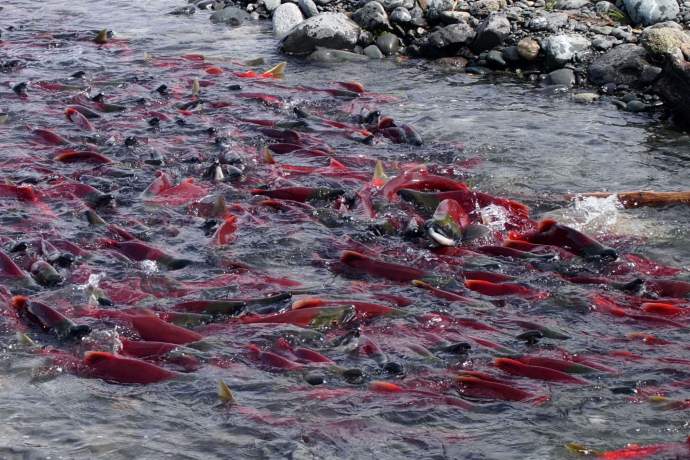
Salmon Run
Finding a stream jammed with thousands of returning salmon may be one of Alaska’s most iconic summer and fall moments. At the climax of a run, the fish might be arrayed up and down the channel, bank to bank, almost appearing like an armada of blushing submarines. In clear feeder streams, pairs of ripe, red fish will be attending each other—swirling and wiggling in their drive to spawn—as females deposit eggs and the males fertilize. It’s engrossing to watch.
Where?
For great salmon viewing—as opposed to great fishing for salmon—you’ll want to visit clear sections of spawning streams, often upstream feeder creeks that are closed to harvest by people. The salmon viewing overlooks in Portage Valley near Williwaw Campground and on the boardwalk of Potter Marsh in south Anchorage are good bets from mid summer on. To experience one of those primal concentrations with hundreds or thousands of fish filling the stream, seek out places with big sockeye or pink salmon runs. The Russian River from late summer on will fill up with green-headed, red-bodied salmon. Pinks will converge on Turnagain Arm streams in huge numbers—try Indian, Ingram and Resurrection creeks.
When?
Timing is key for salmon viewing, and it varies from species to species, and from creek to creek. In general, late July into September produces the densest schools. A rule of thumb might be to check out the upstream spawning areas a couple of weeks after downstream fishing has peaked. Don’t give up as the summer ends either. Coho salmon continue to arrive deep into the fall, and big red fish can be seen swirling and spawning in crystal streams even after it snows.
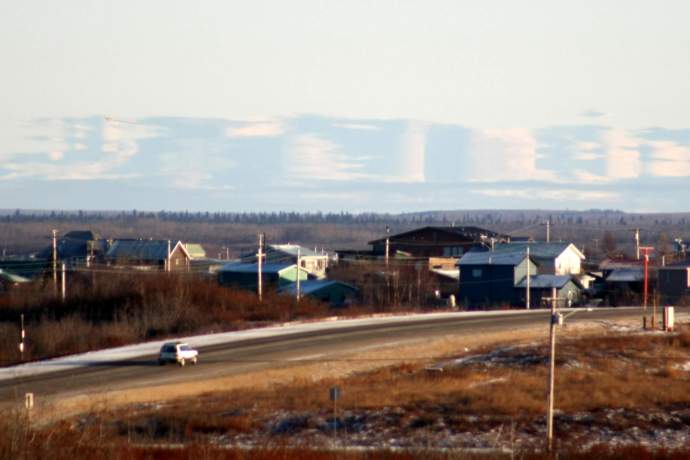
Fata Morgana
This complex and sometimes bizarre mirage erupts from the horizon, distorting distant features into blocky or inverted shapes that sometimes morph in real time. Mountain ranges form weird cityscapes or elongate into mushroom shapes. While common worldwide in deserts or at sea, this optical display has an affinity for Alaska geography and climate. It’s generated when light rays bend as they pass through a sharp inversion, often when frigid air hugs the ground with a mass of warm air on top. Scholars say it’s named after Arthurian sorceress Morgan Le Fey.
Where?
Look for Fata Morgana wherever you have a vast, horizon-reaching fetch to scan—on the seashore, the edge of a tundra plain, a view from a high spot across a long valley. Best bet in Anchorage may be at Mile 4.2 of Arctic Valley Road. Pull over at the fifth switchback from the bottom where there’s an 80-mile view of the Tordrillo Range and Mount Spurr Volcano beyond the Anchorage skyline. During winter cold snaps, these distant, snowbound mountains seem to transform into a stunning range of mesas and pillars.
When?
In the Far North, Fata Morgana appears much more often during deep winter, when high pressure clears the skies and still air stratifies into layers of cold and warm. One of the delights of visiting Alaska between November and March.
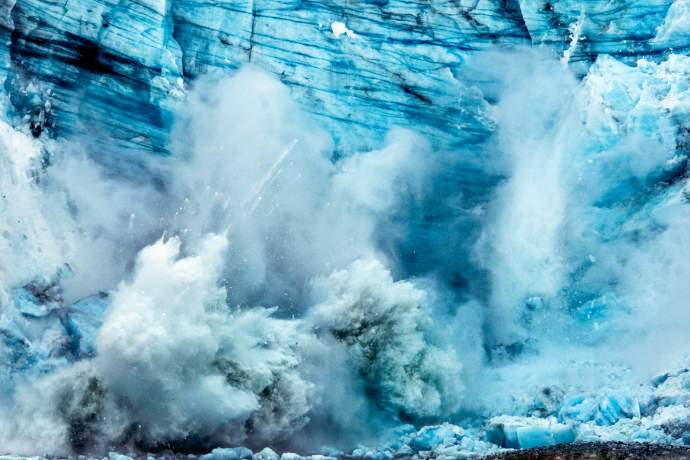
Calving Glacier
Great hunks of ice regularly spill from the faces of tidewater glaciers, shattering into avalanches that sound like thunder as they crash into the sea. They call it “calving” because the process produces countless baby icebergs and bits and growlers that go adrift on the tide. (And then melt into fantastic shapes.) Driven by the relentlessly advancing river of ice—think of a glacier as a conveyor belt—the same phenomenon can be seen where glaciers terminate in freshwater lakes.
Where
All you need is an advancing glacier with its terminal face in deep water. Prince William Sound glaciers in Harriman Fiord and Blackstone Bay are easily reached on tour or private boats from Whittier, and often produce startling calving events every few minutes. Holgate and Bear glaciers outside of Resurrection Bay in Kenai Fjords National Park are popular destinations with Seward tours. Two lake glaciers that feature calving are Portage Glacier around a mountain corner across Portage Lake (take this quick cruise) and Spencer Glacier at the Spencer Glacier Whistlestop recreation area about 10 miles south of Portage on the Alaska Railroad.
When
Although glaciers can continue calving all year, the rate dials way back during winter, especially during periods of hard freezes. Spring, summer and fall are the best times to view calving events. Hot summer days with surging meltwater flows tend to trigger the biggest collapses.
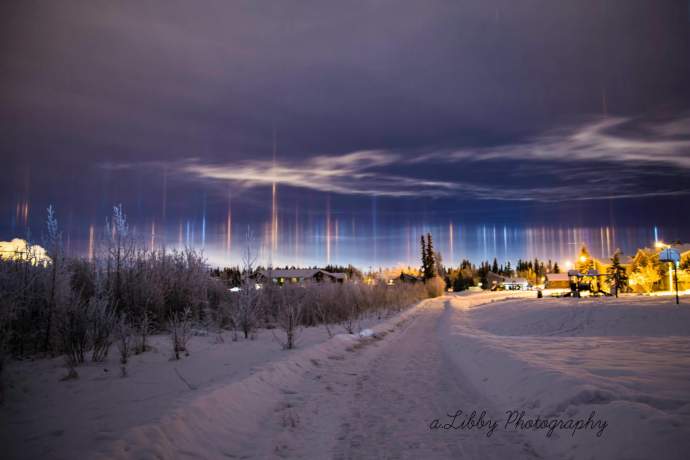
Light Pillars
What are they?
These glowing columns appear to emanate from light sources when uncounted billions of hexagonal ice crystals suspend in the air, their flat faces horizontal to the ground, and reflect the light. Optical illusions similar to halos and sundogs, eerie light pillars can extend from the sun or moon through high clouds and seem to dominate the whole sky. But during Alaska’s frigid, fog-bound winter nights, these celestial shafts come to earth, rising from every streetlight, like a forest of colored beams.
Where?
Human generated light pillars are common throughout Alaska wherever people have erected artificial light systems. Probably easiest to see from a distance. Try looking toward a neighborhood or city block from a dark, elevated spot during an icy, foggy night with temps in teens or below. The low-hanging winter sun is another good bet.
When?
Light pillars from artificial light are definitely a dark season phenomena in Alaska. Most common between November and February after sunset.
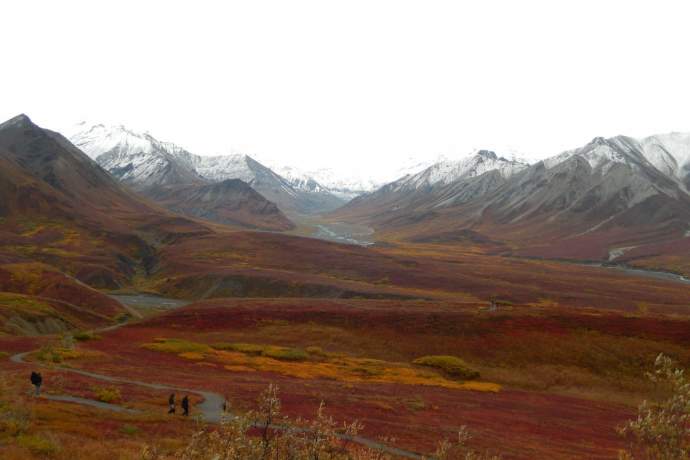
Fall tundra foliage
As summer shifts into autumn, the tundra of Alaska’s Arctic and alpine zones morphs into a stunning reddish display that rivals the auburns and russets of eastern hardwood forests. Catch the changing season at its peak, and the whole landscape will seem aglow in a palette that sweeps valleys and slopes into a scene reminiscent of an impressionist painting.
Where
Some of the most spectacular fall tundra color can be found along the two Denalis—the famous visitor road into Denali National Park and the gravel Denali Highway that winds through the foothills of the Alaska Range between the Richardson and Parks highways. Other glorious spots: Hatcher Pass and the Independence Mine State Historical Park northwest of Palmer, Broad Pass on the Parks Highway, Murphy Dome in Fairbanks and Atigun Pass through the Brooks Range on the Dalton Highway. Look for the shifting colors above the treeline in Chugach State Park next to Anchorage and in the Kenai Mountains on the drive to Seward or Hope.
When
The turning of the tundra depends upon the alchemy of latitude and altitude. The further north you go—and the higher up you go—the sooner the foliage goes blood red. (In any particular spot, it probably depends upon the timing of the first night freezes.) So some higher altitude or far northern locations might transform in the last 10 days of August, while others areas might delay into September. A good target date to start seeking peak color might be Labor Day, especially in the national park, along the Denali Highway and in the passes.
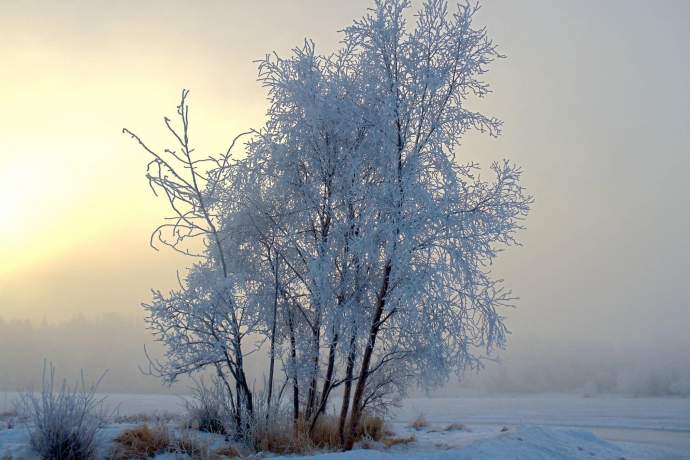
Hoar Frost
What is it?
Calm, clear nights with high humidity and frigid temperatures will coat tree branches and plants (and just about any exposed surface) with a delicate plumage of feathery ice, producing one of the Alaska’s most beautiful sights. These frosted forests occur throughout the main part of the state, whenever water vapor makes contact with objects colder than a dew point that’s below 32 F. Think of it as winter’s brilliant dew.
Where?
From Anchorage and the Mat-Su Valley to Fairbanks and Interior valleys. Anchorage’s position between the Chugach Mountains and the open water of Cook Inlet can deliver weeks of hoarfrost.
When?
Most common between November and February during brittle cold snaps approaching zero and below, especially during temperature inversions (where valley floors grow colder than mountain tops.)

